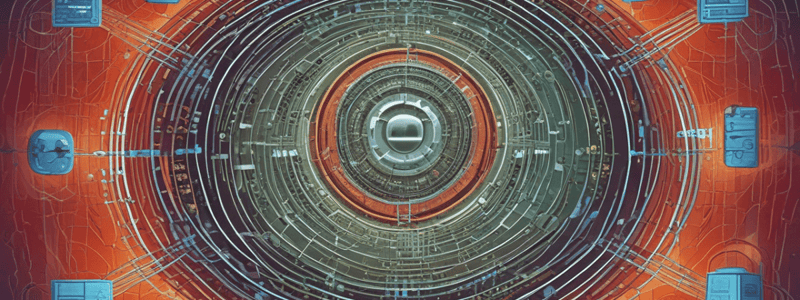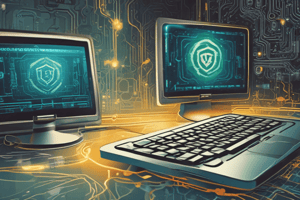Podcast
Questions and Answers
True or false: The purpose of the policy is to protect networks and information processing facilities from malicious software?
True or false: The purpose of the policy is to protect networks and information processing facilities from malicious software?
True (A)
True or false: The policy includes only information processing facilities under the control of the company?
True or false: The policy includes only information processing facilities under the control of the company?
False (B)
True or false: Users are responsible for scanning suspicious emails and files, reporting viruses, and disabling anti-virus software?
True or false: Users are responsible for scanning suspicious emails and files, reporting viruses, and disabling anti-virus software?
False (B)
True or false: Third-party vendors are not required to provide updates and support for the anti-virus software?
True or false: Third-party vendors are not required to provide updates and support for the anti-virus software?
True or false: Anti-virus software does not need to proactively and periodically scan for viruses?
True or false: Anti-virus software does not need to proactively and periodically scan for viruses?
True or false: Workstations, laptops, and servers all require anti-virus protection?
True or false: Workstations, laptops, and servers all require anti-virus protection?
True or false: Laptops may need alternative arrangements for virus definition updates when operated away from the trusted network?
True or false: Laptops may need alternative arrangements for virus definition updates when operated away from the trusted network?
True or false: Gateway virus scanning is not needed to scan web traffic for malicious software?
True or false: Gateway virus scanning is not needed to scan web traffic for malicious software?
True or false: E-mail content scanning should not be used to check all incoming and outgoing emails for viruses?
True or false: E-mail content scanning should not be used to check all incoming and outgoing emails for viruses?
Study Notes
Anti-virus and Malicious Code Policy Summary
- The purpose of this policy is to protect networks and information processing facilities from malicious software.
- The policy includes all information processing facilities and mobile computing devices under the control of the company.
- Roles and responsibilities include installing and updating approved anti-virus software, monitoring and responding to alerts, and educating users.
- Users are responsible for scanning suspicious emails and files, reporting viruses, and not disabling anti-virus software.
- Third-party vendors must provide updates and support as needed.
- Anti-virus software must proactively and periodically scan for viruses, scan new code before production, and scan files received from external sources.
- Workstations, laptops, and servers all require anti-virus protection.
- Laptops may need alternative arrangements for virus definition updates when operated away from the trusted network.
- Gateway virus scanning is needed to scan web traffic for malicious software.
- E-mail content scanning should be used to check all incoming and outgoing emails for viruses.
- Violation of the policy may result in disciplinary action, unless a valid business case is provided and approved.
- The policy is in line with the Payment Card Industry Data Security Standard.
Studying That Suits You
Use AI to generate personalized quizzes and flashcards to suit your learning preferences.




